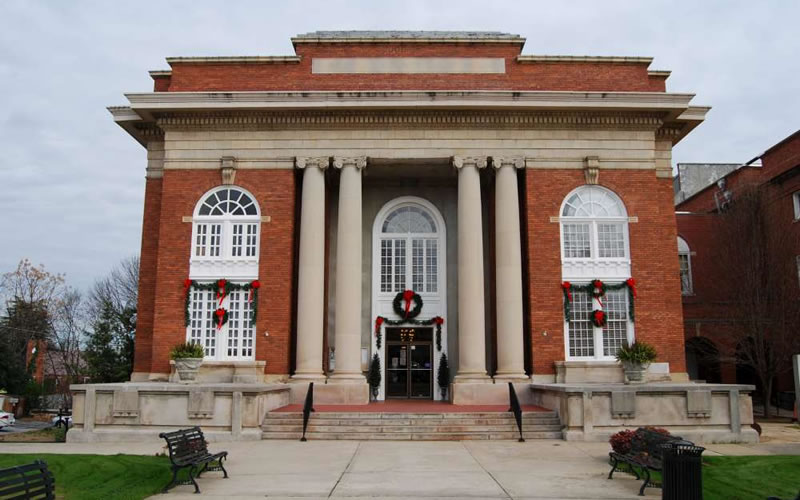NEWS: “Student Bill of Rights” hits false note, critic says
BRIEFS: Budget talks stall among conferees
CALENDAR: First of two mini-sessions next week
COMMENTARY, Brack: South Carolina not so polite to immigrants
SPOTLIGHT: Charter Communications
MY TURN, Williams: New child advocacy office will make a difference
MY TURN, Willis: Politicians run for office for lots of reasons
FEEDBACK: What do these words really mean?
MYSTERY PHOTO: Impressive brick building
S.C. ENCYCLOPEDIA: Highway 301
NEWS
NEWS: ‘Student Bill of Rights’ hits false note, critic says
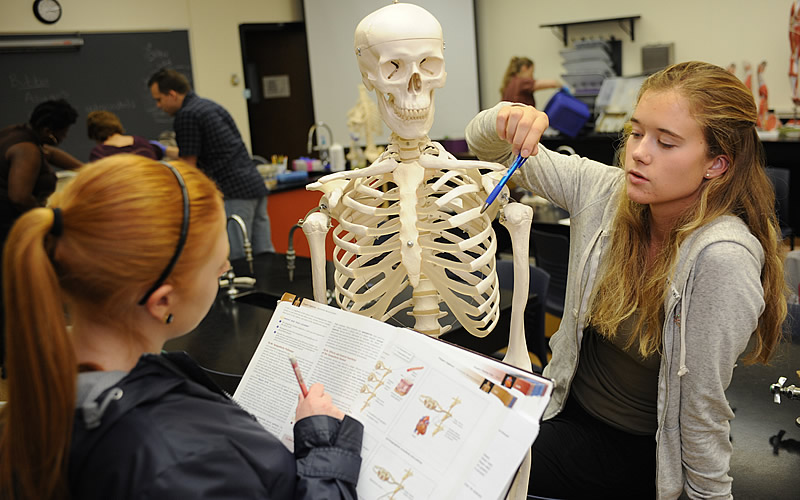
By Lindsay Street, Statehouse correspondent | A state higher education watchdog and advocate is ringing alarms all over the state about the increasing costs of college tuition and a dwindling number of college students. But its recently released “student bill of rights” — aimed at furthering dialogue on higher education — has hit a false note for some.
One of the bill-of-rights critics is recent Francis Marion University graduate and the college’s former student body president, Marcedes Smith of Marion. In a national atmosphere of students leading protests and expecting a seat at the table, Smith says the S.C. Commission on Higher Education (CHE) mis-stepped when it failed to include students during drafting the document.

“It wasn’t written by students,” Smith said. “That’s interesting to me. If it’s supposed to benefit students, then they should be taken into account … It is something that’s frightening: giving something that big to people who don’t know what we are thinking.”
Leadership at CHE countered the point: The commission held town halls throughout the state and some of those who spoke at the meetings were students.
“We’ve listened to them and it was part of the very fiber of that bill of rights,” CHE Chairman Tim Hofferth said, adding the document was drafted without direct student input before it was presented at town halls.
About the bill of rights
A student bill of rights ultimately is supposed to be a continuation of an ongoing conversation the CHE started in 2017 among students, parents, public colleges and lawmakers, according to Hofferth. The main theme of the topic is the skyrocketing tuition and fee costs: South Carolina has among the most expensive in-state tuition in the nation.
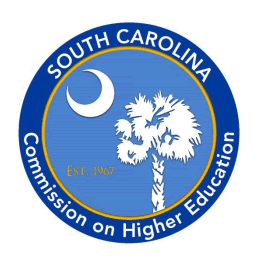 Unfortunately, some say, the CHE is all bark and no bite under state law. It acts as an oversight agency and advocate, but it can only bring items to lawmakers’ attention or make recommendations, Hofferth said.
Unfortunately, some say, the CHE is all bark and no bite under state law. It acts as an oversight agency and advocate, but it can only bring items to lawmakers’ attention or make recommendations, Hofferth said.
“We’re limited as far as what we can do to bend these curves of affordability, accessibility and sustainability,” he said.
So the CHE is rattling the cage now to get attention, starting with the town halls it launched earlier this year and more recently with the student bill of rights. The numbers are dire: public colleges have lost a third of state funding in the last 10 years, and the average tuition ($12,610) among the state’s four-year public institutions is the ninth highest in the nation, according to data from a personal finance website.
The bill of rights calls for:
- Palmetto Fellow and Life lottery tuition scholarship recipients should be granted automatic acceptance to any public institution of higher learning in South Carolina.
- Out-of-state students should not have priority over qualified in-state students, and the number of out-of-state students should possibly be capped. Out-of-state students receiving tuition breaks should be considered carefully.
- Students should be able to transfer freely between public institutions.
- Tuition costs should be frozen or capped.
- Institutions need more transparency when it comes to fees.
The commission should continue to collect information on enrollment and budget to ensure financially viable institutions.
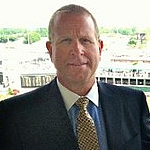
“(The bill of rights) was the commission’s work,” Hofferth said. He added that student input was woven into the bill of rights, but no students were directly involved in drafting the bill.
But if the CHE had polled students or gotten more direct involvement, critic Smith said she thought the result would look slightly different. She said she agreed with many of the points — not many can argue against the stark numbers of college affordability — but she worried that capping out-of-state students could affect experiential and background diversity on campus. She also said students could also face unfair financial or academic challenges by gaining acceptance to any university based on scholarship awards.
Attempts to reach student leadership at Clemson, College of Charleston, University of South Carolina, and Wofford were unsuccessful. According to CHE Executive Director Jeff Schilz, USC’s student government met with CHE last year and discussed freezing tuition.
What’s next
Higher education reform is already on lawmakers’ radar, but it failed to get on the agenda during this past session.
In the final days of session, education hawk S.C. Sen. Vincent Sheheen, D-Kershaw, proposed a bill that would lower higher education costs in the state. The bill was meant to set up a conversation over costs during next year’s session, beginning in January.
Gov. Henry McMaster has also come out in support of capping tuition in the state.
“It’s the first pitch in a nine-inning game,” Hofferth said. “We’re not there. It was a way to organize through all the noise.”
More town halls and a CHE meeting with college presidents is expected during the summer break.
“This isn’t just a problem for one school or a couple people; this is a problem for the state,” Schilz said.
Smith, who will attend Charleston School of Law in the fall, said she would like to see more student input on CHE’s advocacy efforts.
“I would love in the future to see the Commission on Higher Education have a lot of student input and maybe consider making a clear layout so students can follow and understand it,” Smith said. “Town hall forums — it takes a little bit more than that to reach out to students and really get the input. You can’t make decisions for other people you can’t relate to.”
- Have a comment? Send to: feedback@statehousereport.com
NEWS BRIEFS
NEWS BRIEFS: Budget talks stall among conferees
Staff reports | House and Senate finance leaders have agreed to disagree, for now.
![]() S.C. Senate Finance Committee Chairman Hugh Leatherman, R-Florence, and House Ways and Means Committee Chairman Brian White, R-Anderson, released a joint statement Wednesday that said further meetings to reach a budget deal would be postponed.
S.C. Senate Finance Committee Chairman Hugh Leatherman, R-Florence, and House Ways and Means Committee Chairman Brian White, R-Anderson, released a joint statement Wednesday that said further meetings to reach a budget deal would be postponed.
The House and Senate are at odds on the $8.2 billion spending plan, which was sent to conference for three members from each chamber to try to come to a mutual agreement.
“The differences that the conferees face are numerous and complex,” the statement said. “These will take time to analyze.”
The session officially ended May 10 without the budget passing. It was widely expected for the budget to be a top priority for the first of two planned mini-sessions slated for May 23 and 24. But the statement said making that deadline would require shortcuts, so it appears the budget will be held until June 27 and 28, after the June 12 primaries for primary-challenged House lawmakers.
This development also opens up the possibility of a third return to the capitol for lawmakers, as they may want to consider overriding any potential gubernatorial vetoes for budget items.
Also in the news this week:
Opioid bill. A bill that would require parental consent for teenagers prescribed opioid drugs is heading to the governor’s desk. It’s one of 87 bills that were passed in the last days of session.
Cybersecurity. Gov. Henry McMaster signed into law a requirement for insurance companies to better protect personal data. South Carolina is now the first state in the nation to have a cybersecurity law for insurance companies.
Recidivism bill. A bill aiming to make it easier for ex-inmates to return to work is awaiting McMaster’s signature.
MOX construction ends. The mixed oxide fuel fabrication facility at the Savannah River Site has been canceled by the federal government in favor of a plan that would help arm nuclear weaponry.
International award for secretary of state. The office of the Secretary of State has won the 2018 International Association of Commercial Administrators’ merit award for its online services.
CALENDAR
CALENDAR: First of two mini-sessions next week
Staff reports | Lawmakers are returning to Columbia next week for the first of two planned two-day sessions to take up unsettled business after the session convened May 10.
![]() May 23 and 24 have been set aside for bills that have already passed both bodies but are in conference, or a shortlist of previously agreed-upon legislative items, such as lawmakers’ response to the $9 billion nuclear project cancellation.
May 23 and 24 have been set aside for bills that have already passed both bodies but are in conference, or a shortlist of previously agreed-upon legislative items, such as lawmakers’ response to the $9 billion nuclear project cancellation.
The House intends to tackle the nuclear question right out the gate, looking at a second reading of the Senate’s amendments to a bill that seeks to create a utilities customer advocate with H. 4379.
As of this morning, the Senate has not released its calendar for the May 23 meeting.
Both bodies meet noon May 23.
Also ahead:
Saturday rally. S.C. teachers and public employees will rally Saturday at the state capital to demand higher pay from state leaders. There is, however, no threat of a strike, like other states, however. According to media reports, state employees haven’t seen a raise in years. Read more about the rally here.
BRACK: South Carolina not so polite to immigrants
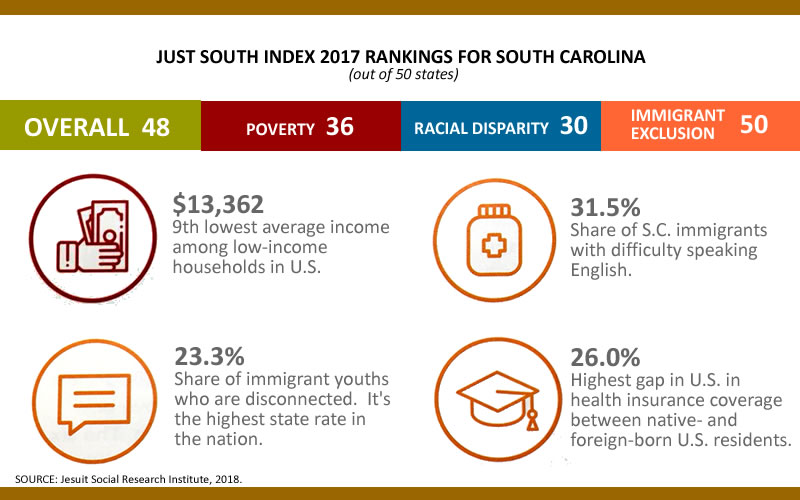
By Andy Brack, editor and publisher | South Carolina has long been a home for immigrants — from the English, enslaved Africans and French Huguenots to Germans, Irish and, most recently, people from Latin America.
But these days, we shamefully ignore our rich immigrant soup, caught in the guttersnipe of national politics about “those people” who want to come to the United States, just like our forefathers moved here. And just like the grandfather of the forgetful current president, who has embarrassingly branded undocumented immigrants as “animals.”
 A new social justice report says South Carolina ranks dead last in how it excludes immigrants in thought, word and deed. Quite simply, we generally aren’t welcoming to immigrants, despite a reputation for being polite to visitors.
A new social justice report says South Carolina ranks dead last in how it excludes immigrants in thought, word and deed. Quite simply, we generally aren’t welcoming to immigrants, despite a reputation for being polite to visitors.
The Jesuit Social Research Institute at Loyola University in New Orleans recently released Just South Index 2017, a data-backed assessment of nine social justice indicators that look at wealth, opportunity and privilege. “Social injustice,” the report explains, “is any policy or system that detracts from the common good or undermines human dignity.” [NOTE: Quote corrected after original publication.]
The 42-page report calls attention to social justice deficits in three general areas: poverty, racial disparity and immigrant exclusion. Overall, South Carolina ranked third from the bottom in the Just South Index. But surprisingly, it wasn’t poverty (#36 of 50 states) or racial disparity (#30) that pushed us to the bottom. It was how we treat immigrants, which was based on three indicators:
- Rate of disconnected immigrant youths. Young adults (18 to 25) who aren’t in school, aren’t working or don’t have a college degree are considered disconnected. Those who are immigrants often fall into this category, susceptible to barriers for educational and other opportunities. Some 23.3 percent of immigrant youths in South Carolina are disconnected, the report says, the highest rate in the nation, which has a 14.6 percent rate, the report says.
- English language problems. South Carolina ranks 38th in the percentage of immigrants who have difficulty speaking English, but the state’s share of immigrants with language trouble (31.5 percent) is slightly lower than the national average (32.6 percent).
- Health insurance gaps. South Carolina also ranks last in the gap in the health insurance rate between foreign-born and native-born residents. The percentage gap between the two groups is 26 percent, compared to 13.8 percent nationally.
Bottom line: We fail to offer good opportunities to immigrant young adults, including making health care affordable, and we can do better in helping them learn English.
Sue Berkowitz, executive director of the S.C. Appleseed Legal Justice Center in Columbia, isn’t surprised by the Catholic university’s report, in part because of how institutions exclude immigrants.

“There had been — and still is — ongoing legislative/administrative actions that prove our state’s political leaders are targeting immigrants,” she told us, noting passage of anti-immigration laws and the GOP’s current obsession with sanctuary cities.
“Our state does not allow a whole category of documented individuals to get professional and technical licenses or get instate tuition,” she said. “Young immigrants, DACA beneficiaries or ‘dreamers’ who lived their entire life here [who were] brought to this country when children, are not allowed to get professional licenses or in-state tuition. Our own attorney general is suing the current administration to strip them of their documentation. All of this is a prime example of social exclusion.”
Our state can do more to include, not exclude. As outlined in the Just South report, states can reduce barriers to post-secondary education, bolster efforts for English as a Second Language programs, improve family literacy programs, encourage access of disconnected youths to job training programs and expand mentoring programs.
South Carolina, like most other Southern states, also doesn’t allow legally-residing immigrant children and pregnant mothers to use public health insurance without a five-year waiting period. State government and businesses should take steps to close the health insurance gap faced by immigrants.
We can do better. Let’s be more than a state that says “Lord, have mercy” or “Bless their hearts” to new immigrants to South Carolina. Let’s stop excluding people already here who might sound or look different. Let’s embrace their talents so they become productive residents who contribute to our culture and economy.
- Have a comment? Send to: feedback@statehousereport.com.
SPOTLIGHT
SPOTLIGHT: Charter Communications
 The public spiritedness of our underwriters allows us to bring Statehouse Report to you at no cost. Today, we’re happy to shine the spotlight on Charter Communications, the nation’s fastest-growing TV, internet and voice company. Committed to integrating the highest quality service with superior entertainment and communications products, Charter is at the intersection of technology and entertainment, facilitating essential communications that connect 24 million residential and business customers in 41 states, including South Carolina. In addition to being committed to giving back to the communities we serve, the bedrock of our business strategy is to serve our customers and exceed their expectations.
The public spiritedness of our underwriters allows us to bring Statehouse Report to you at no cost. Today, we’re happy to shine the spotlight on Charter Communications, the nation’s fastest-growing TV, internet and voice company. Committed to integrating the highest quality service with superior entertainment and communications products, Charter is at the intersection of technology and entertainment, facilitating essential communications that connect 24 million residential and business customers in 41 states, including South Carolina. In addition to being committed to giving back to the communities we serve, the bedrock of our business strategy is to serve our customers and exceed their expectations.
“We, at our core, are a service organization,” President and CEO Tom Rutledge says. “And every product we sell has a huge service component.”
- To learn more, visit Charter’s South Carolina services online here: https://buy.charter.com/services/south-carolina
WILLIAMS: New child advocacy office will make a difference

By Sue Williams, special to Statehouse Report | Each year, thousands of children are served by state agencies because they’ve endured the tragic consequences of abuse, neglect or injury at the hands of adults in their lives. Other children receive services or care from the state because they are at-risk of such adverse experiences.
A small number of these children suffer a second trauma when they receive inadequate protection or care from the very agencies and services designed to serve and protect them.

Lasting solutions will not be a quick fix because the solutions are as complex and costly as the failures. Public outrage at high-profile tragedies and costly lawsuits have spurred lawmakers and the governor to expand funding for child welfare agencies and restructure the ways money is spent. Instead, this will be a long-term process, particularly at the Department of Social Services.
Investments in reform must be ongoing, evidence-driven and well-targeted. This is where the Office of the Child’s Advocate can make its long-term mark.
First, children in the care of the state will now have the right to submit complaints directly to the advocate, rather than the individual state agency they allege has wronged them. Similarly, the public will be able to report concerns about agency care for specific children directly to the advocate. In both instances, the advocate will investigate, review and monitor cases through to resolution.
Second, the advocate may initiate its own investigation of critical incidents, those actual or alleged situations creating significant risk of physical or mental harm to children. It may also review incident investigations completed by state agencies that serve children. This will identify instances where inaction, rather than mis-action, was the problem.
 Third, and most important in the long run, the advocate is tasked with developing and promoting actionable reforms of the care and services that state agencies provide to children. This roadmap for improvement will be developed both from specific lessons learned in its own investigations and reviews of individual cases, as well the broad, systemwide examinations it is mandated to conduct.
Third, and most important in the long run, the advocate is tasked with developing and promoting actionable reforms of the care and services that state agencies provide to children. This roadmap for improvement will be developed both from specific lessons learned in its own investigations and reviews of individual cases, as well the broad, systemwide examinations it is mandated to conduct.
The Office of the Child’s Advocate isn’t a quick or exhaustive fix. It is not a parallel process for serving those children, or a duplicative avenue for reporting suspected abuse or neglect. It is not a far-reaching ombudsman licensed to root out economic inefficiency or fraud. It certainly is not — and should not be — an effort to correct government failures merely through the further growth of government.
The advocate is a standalone watchdog narrowly concerned with the failures of state agencies to provide timely, safe and effective services to children. The model has worked well in many other states, including for our neighbors in Georgia, whose law was the basis of South Carolina’s legislation. The work does not replace the need for far-sighted reform to child-serving state agencies, rather it helps to enrich and guide it.
Sue Williams is CEO of the Children’s Trust of South Carolina. More info: scchildren.org
- Have a comment? Send to: feedback@statehousereport.com.
WILLIS: Politicians run for office for lots of reasons
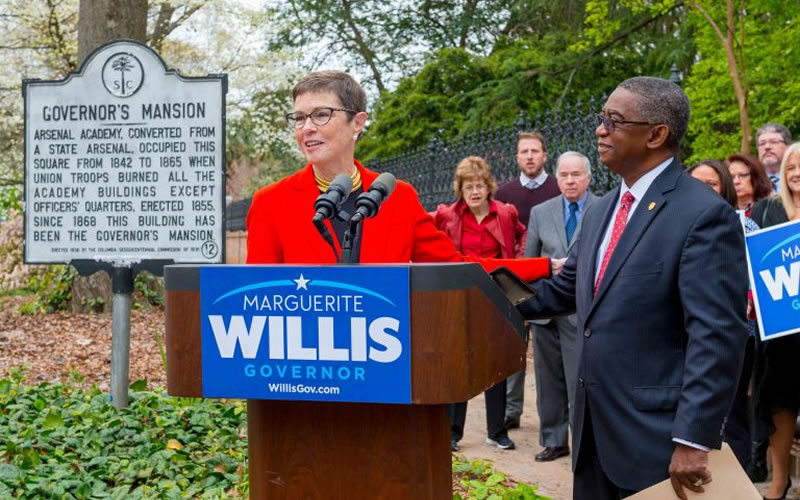
By Marguerite Willis, special to Statehouse Report | As I have campaigned all across our state these last months, people have repeatedly asked me, “Why in the world are you doing this, Marguerite?” My standard answer is that I am a practical problem solver, our state has tough problems, and I think I can help.
![]() For almost 40 years, my career as an attorney has been all about tackling complicated business problems. It’s what I do best. And, as I look around this state, I see firsthand the big issues we face as South Carolinians. For example, poverty. I see not just pockets of poverty but systemic poverty where hundreds of thousands of our neighbors are living in terrible conditions. Many don’t have clean water or access to decent affordable health care. Too many of our children go to schools ranked dead last in the nation. And far too many just don’t have jobs or the skills to do the jobs of the 21st Century.
For almost 40 years, my career as an attorney has been all about tackling complicated business problems. It’s what I do best. And, as I look around this state, I see firsthand the big issues we face as South Carolinians. For example, poverty. I see not just pockets of poverty but systemic poverty where hundreds of thousands of our neighbors are living in terrible conditions. Many don’t have clean water or access to decent affordable health care. Too many of our children go to schools ranked dead last in the nation. And far too many just don’t have jobs or the skills to do the jobs of the 21st Century.
And, sadly, things haven’t changed all that much over time. In 1968, U.S. Sen. Fritz Hollings took a “poverty tour” of South Carolina. If you go back and look at the videos and read the news clips from that era, you’ll find a frightening picture – a picture which still abides today. Simply stated, this is not alright with me. So, I am stepping forward to take on the big issues – like poverty, prison reform and access to affordable health care – and I will be joined in this mission by S.C. Sen. John Scott, a man who has dedicated his life to public service. A man who shares my commitment to leave no South Carolinian behind.
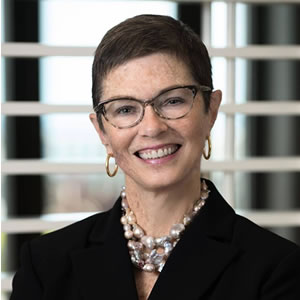
But there is another reason I’m running for governor, a private reason.
As we approach the end of this primary campaign, I’ve been doing some tough thinking about the future. Now granted I’m only 68 years old and in good health, but in the end, we never know when our time is up. One day, however, I will face my Maker and He will ask, “Marguerite, what have you done with the gifts I have given you?” My answer will be this: I woke up every morning and I did my best to try to help my neighbors.
I love this state and its people. I believe I am called to offer my talents, and my heart, to help. And that is my private reason for running, and that is my truth.
Marguerite Willis is a Columbia antitrust attorney who lives in Florence with her husband, the city’s former mayor. More: http://www.willisgov.com
EDITOR’S NOTE: Through June 12, Statehouse Report is running opinion pieces by gubernatorial candidates with primary challengers. Five Republicans and three Democratic candidates for governor have been invited to submit messages they want to share with voters.
Recent candidate contributors
- GOP, McGill: South Carolina is worth fighting for (April 19)
- GOP, Templeton: “The called me the ‘Buzzsaw’” (May 3)
- GOP, Warren: “We deserve better from our leaders” (May 10)
- Have a comment? Send it to: feedback@statehousereport.com.
FEEDBACK
FEEDBACK: What do these words really mean?
To the editor:
![]() I have noticed that all across South Carolina, I see political signs that say the words “conservative” and, in one case, the word “outsider.” I have not seen the words “liberal” or “flaming liberal.” This is just a curiosity.
I have noticed that all across South Carolina, I see political signs that say the words “conservative” and, in one case, the word “outsider.” I have not seen the words “liberal” or “flaming liberal.” This is just a curiosity.
As an older person, I have lived through the changes in verbiage. This is not really political correctness (whatever that means). One example Is the word “issues.” I am not content to think that “issues” is the same as “problems.” It may be a bit more nuanced than what I usually think. Do those two works really mean the same thing?
I now come to some political definitions.
What does the word “conservative” really mean? I remember George W. Bush suggesting that he is a “compassionate conservative.” That one really blew my mind. I am not sure what “conservative” means today.
However, I do listen carefully when people call themselves that. Even when someone says that they are fiscally conservative but socially liberal, I have a vague idea of what that presents itself. However, today’s “conservatives” are yesterday’s “reactionaries.” Most want to go back in time to about 1954 when things were all a particular way in all fields of human endeavors.
— Arnold Hillman, Bluffton, S.C.
Send us your thoughts
We love hearing from our readers and encourage you to share your opinions. But you’ve got to provide us with contact information so we can verify your letters. Letters to the editor are published weekly. We reserve the right to edit for length and clarity. Comments are limited to 250 words or less. Please include your name and contact information.
- Send your letters or comments to: feedback@statehousereport.com
MYSTERY PHOTO
MYSTERY PHOTO: Impressive brick building
Here’s an impressive, official-looking brick building. Clue: It’s in South Carolina. Send your best guess – plus your name and hometown – to feedback@statehousereport.com. In the subject line, write: “Mystery Photo guess.” (If you don’t include your contact information, we can’t give you credit!)
Our previous Mystery Photo
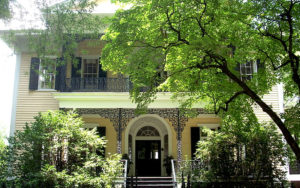 Several readers clued in that the grand old Carolina house in the May 11 issue was the Lace House at the S.C. Governor’s Mansion.
Several readers clued in that the grand old Carolina house in the May 11 issue was the Lace House at the S.C. Governor’s Mansion.
Congratulations to those who identified the mystery: Charles Lesser, Mary Greene, Helen C. Foley, Michael LeFevre, Dawn Bodenhamer and Jay Altman, all of Columbia; Lexie Chatham of West Columbia; and George Graf of Palmyra, Va.
Graf shared how the Lace House, also known as the Robertson House, is located in Columbia’s Arsenal Hill district:
“According to colatoday, Arsenal Hill was one of Columbia’s first residential areas. It sat at the westernmost border of Columbia’s original grid. These days, its borders are defined by Elmwood, Assembly, Taylor and Huger streets.
“Its status as the highest point in Columbia’s original 2×2-mile city limits made it desirable. While poor, working-class families built cottages at lower elevations and closer to the river, the monied elite tended more toward the northwest of the city.
“Back in the day, Arsenal Hill would have been studded with Queen Anne and Victorian homes. These ornate structures looked more like gingerbread houses than real-life homes. The Lace House is a fine example of the type of detailing you could find throughout Arsenal Hill.
“Over time, the neighborhood’s built landscape and population makeup shifted. After the Civil War, some African Americans who had been enslaved in the mansions atop found themselves remaining in the neighborhood. Some found work as domestic servants in the houses atop the hill. The railway ran nearby and had more and more openings in the later 19th century which were filled by both blacks and whites from the working class.
“The farther up Arsenal Hill you lived, the more money you had. At the top were ornate, gingerbread house-lookalikes built with planter-class money. The farther down you traveled on the hill (and the closer to the railroad) the more affordable the housing became.”
Send us a mystery: If you have a photo that you believe will stump readers, send it along (but make sure to tell us what it is because it may stump us too!) Send to: feedback@statehousereport.com and mark it as a photo submission. Thanks.
S.C. ENCYCLOPEDIA
HISTORY: Highway 301

S.C. Encyclopedia | Construction of this major U.S. highway in South Carolina began in 1932 during the Great Depression, when the federal government began taking over the maintenance and construction of many state roads. The route began at Baltimore, Maryland, and ended at Sarasota, Florida, crossing through many towns in eastern South Carolina, including Dillon, Latta, Florence, Manning, Olanta, Summerton, Bamberg and Allendale. From the North Carolina border to the Savannah River, Highway 301 covers a distance of approximately 180 miles.
The highway’s many nicknames are an indication that it was popular among tourists throughout the second quarter of the twentieth century. These names included: “Tobacco Trail,” “Highway of Southern Hospitality,” “Tourist Highway,” “Shortest Route from Maine to Florida,” and “The Washington-Florida Short Route.” This road was popular among tourists because it avoided some of the larger cities, had no toll bridges or ferries, and was paved its entire length.
During the 1950s this highway was a major U.S. north-south route, well known to travelers in the eastern United States. Even the popular television show I Love Lucy, featured an episode where Lucille Ball traveled in an automobile with a woman who always traveled Highway 301 to Florida. This highway created a demand for restaurants and motels in South Carolina. Some popular motels included the Lewis Motel in Olanta, the Santee Motor Company in Manning, the Holiday in Florence, and the Cotton Patch Motel in Bamberg.
The building of Interstate 95 in the late 1950s and 1960s, which ran almost parallel to U.S. 301, caused the tourist traffic to decline on the older highway. Businesses on U.S. 301, particularly the motel operators, had difficulty in maintaining their customer base. Several rebuilt near the interstate, while others operated at a much slower pace.
— Excerpted from an entry by Lloyd Johnson. To read more about this or 2,000 other entries about South Carolina, check out The South Carolina Encyclopedia, published in 2006 by USC Press. (Information used by permission.)
ABOUT STATEHOUSE REPORT
Statehouse Report, founded in 2001 as a weekly legislative forecast that informs readers about what is going to happen in South Carolina politics and policy, is provided to you at no charge every Friday.
- Editor and publisher: Andy Brack, 843.670.3996
- Statehouse correspondent: Lindsay Street
More
- Mailing address: Send inquiries by mail to: P.O. Box 22261, Charleston, SC 29407
- Subscriptions are free: Click to subscribe.
- We hope you’ll keep receiving the great news and information from Statehouse Report, but if you need to unsubscribe, go to the bottom of the weekly email issue and follow the instructions.
© 2018, Statehouse Report. All rights reserved.


